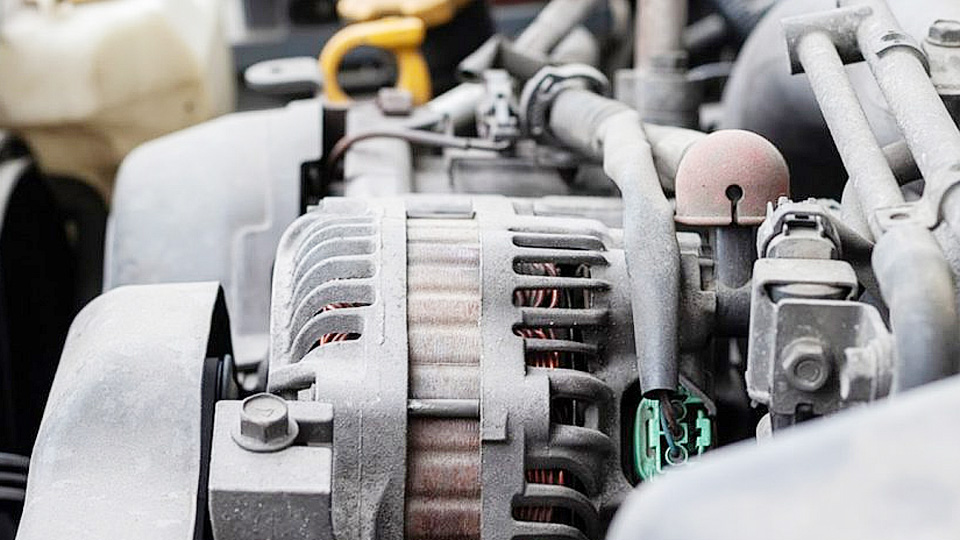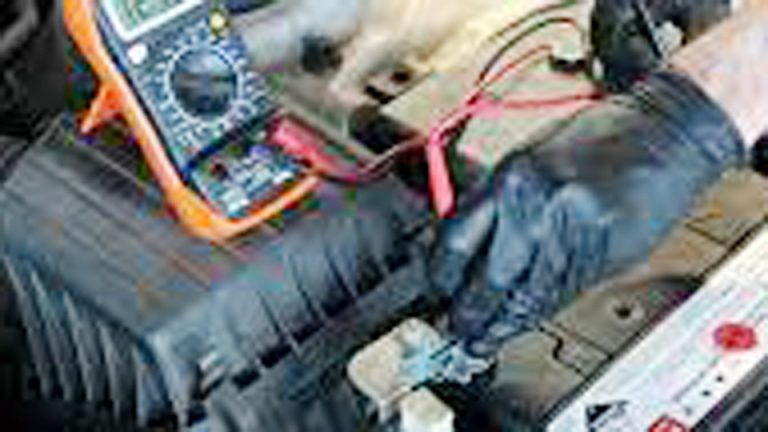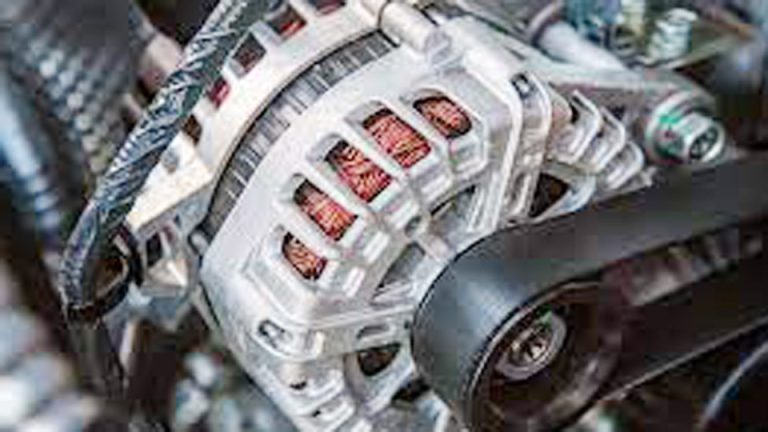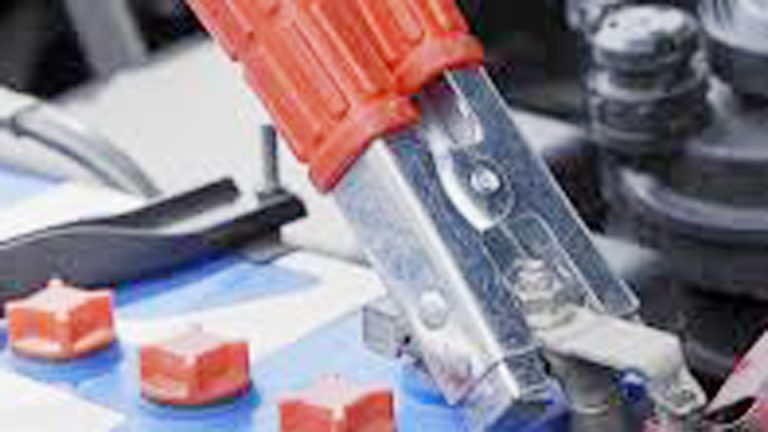One of the scariest moments I’ve had behind the wheel was when my dashboard lights started flickering, the radio cut out, and the car eventually died right in the middle of traffic. That’s when I learned firsthand what happens if your car alternator goes out. Most drivers think of the alternator as just another part under the hood, but the truth is, it’s the heart of your electrical system—keeping the battery charged and powering everything from your headlights to your air conditioning.
When it fails, you’re left with symptoms like dim lights, dead batteries, strange warning lights, or even a car that won’t start at all. And here’s the kicker: ignoring alternator problems doesn’t just leave you stranded—it can also damage other parts of your car and cost you a lot more in repairs. In this guide, I’ll break down the real signs of a failing alternator, what you can expect when it finally goes out, and how to deal with it before it leaves you stuck on the side of the road.

Image by dubizzle
Understanding the Alternator’s Role
Let’s kick things off with what this thing does. The alternator is the unsung hero of your car’s electrical system, keeping everything powered while you’re on the move.
How Does an Alternator Work?
Picture the alternator as a mini generator tucked under your hood. It’s driven by a belt connected to your engine’s crankshaft. As the engine runs, the alternator spins, creating electricity through a rotor and stator setup. This produces alternating current (AC), which gets converted to direct current (DC) to charge your battery and power your lights, radio, and navigation. It’s pumping out about 13.5 to 14.5 volts normally. In places like Arizona’s deserts, where heat taxes every system, a solid alternator keeps things stable.
Why Does the Alternator Matter?
Without it, your car’s a ticking time bomb. The battery’s only good for starting the engine and brief bursts—it can’t handle the full load for long. I’ve seen friends limp along thinking it’s just a battery issue, only to get stuck in a Midwest snowstorm. The alternator powers critical stuff like power steering and ABS brakes in newer cars, so when it fails, you’re not just losing tunes—you’re losing safety.
Spotting Alternator Trouble Early
Alternators don’t just die without warning. They give you clues, and catching them early can save you from a tow truck bill. I’ve diagnosed this on everything from a Dodge Ram to a Toyota Corolla, and the signs are consistent.
Dimming or Flickering Lights
Your headlights or dash lights might dim at idle or flicker when you rev the engine. I noticed this once on a late-night drive in Oregon—my headlights were barely cutting through the fog. It’s because the alternator isn’t delivering steady power. This is a big deal in rural areas with dark roads.
Battery Warning Light
That little battery icon on your dash isn’t just decoration. If it lights up, it’s screaming that your charging system’s off—usually the alternator. I’ve seen this pop up in stop-and-go Chicago traffic, where low RPMs strain a weak unit.
Dead or Draining Battery
If your car dies after a jump-start and won’t hold a charge, the alternator’s likely not recharging the battery. This hit me hard in a freezing Michigan winter—thought it was the battery, but nope, alternator.
Weird Noises Under the Hood
A grinding or whining sound? That’s often the alternator’s bearings or a slipping belt. I’ve heard this on older Fords after dusty backroad drives—grit wears things down fast.
Burning Smells
Smell burning rubber or hot wires? The belt might be slipping, or the alternator’s overheating. I caught this once on a Chevy Tahoe—pulled over just in time to avoid worse damage.
Sluggish Accessories
Power windows moving like molasses? Radio cutting out? AC barely blowing? The alternator’s struggling to keep up. This is common in loaded SUVs, especially on family trips with every gadget running.
Stalling or Hard Starting
Your engine might stall at stoplights or struggle to start. I had this happen on a Jeep during a camping trip—nearly got stuck in the Rockies.
Here’s a quick table to sort out alternator vs. battery issues, something I’ve used to troubleshoot in my driveway:
| Symptom | Alternator Issue? | Battery Issue? |
|---|---|---|
| Dim lights while driving | Yes | No |
| Dies after jump-start | Yes | No |
| Noises or burning smells | Yes | No |
| Battery light on dash | Yes | Sometimes |
| Hard start in cold | Sometimes | Yes |
| Slow accessories | Yes | Yes |
What Happens When the Alternator Fails on the Road
So, what happens if your alternator goes out while driving? It’s not like the movies where the car explodes, but it’s bad news. Your battery takes over, but it’s like running a marathon on an empty stomach—it’ll give out fast, usually within 20-60 minutes, depending on what’s running.
Lights dim first, then accessories like the AC or radio fade. Power steering can get heavy, making turns tough—imagine wrestling your wheel on a twisty Appalachian road. Eventually, the engine stalls as the battery dies. I had this happen on I-95 in Florida heat—barely made the shoulder before everything quit. Warning: Don’t keep driving; it can fry your battery or electronics from voltage spikes.
Can You Drive With a Failing Alternator?
Technically, you might limp a few miles on battery power—5-20 miles max, less with headlights or AC on. But it’s risky. In urban areas like LA, you might make it to a shop. In rural Montana? You’re begging for a long walk. Pros: Gets you to safety. Cons: Could strand you worse or damage components. I’ve done it once to reach a garage, but I wouldn’t recommend it.
Testing Your Alternator at Home
Before you panic, you can test it yourself. I’ve done this in parking lots with a $20 multimeter—beats guessing.
Step-by-Step Alternator Test
- Park safely, engine off. Pop the hood and find the alternator—usually belt-driven near the engine’s front.
- Set your multimeter to DC volts (20V range). Touch red probe to battery’s positive, black to negative. Should read ~12.6 volts.
- Start the engine, rev to 2,000 RPM. Voltage should hit 13.5-14.5 volts. If not, alternator’s suspect.
- Turn on headlights, AC, radio. Voltage should stay above 13 volts. If it drops, trouble’s brewing.
- Listen for noises, sniff for burning. Low voltage plus smells? Stop driving.
Pro tip: Clean battery terminals first—corrosion in humid places like Florida can mimic alternator issues. Auto parts stores often test for free if you’re unsure.
Fixing a Bad Alternator
Once you confirm it’s the alternator, you’ve got choices. A loose belt might be a quick fix, but a dead unit means replacement.
DIY vs Professional Repair
DIY if you’ve got tools and confidence. It’s saved me hundreds on older cars. Pros: Parts cost $100-300. Cons: Takes a few hours, and wiring mistakes can fry stuff.
Go pro for complex vehicles like hybrids or if it’s your only car. Shops charge $500-1,000 total. Worth it for beginners or busy folks. I’ve gone pro on newer models to avoid headaches.
How to Replace an Alternator
Warning: Disconnect the battery to avoid shocks. This guide fits most US cars like Fords or Hondas—check your manual.
- Tools: Socket set, wrenches, new alternator (match amps, 100-150A typical), belt tensioner tool.
- Disconnect negative battery cable. Loosen serpentine belt via tensioner pulley.
- Unbolt alternator (2-3 bolts). Disconnect wiring harness and battery cable—snap a photo for reference.
- Remove old unit, compare to new. Transfer pulley if needed.
- Install new alternator, reconnect wires, tighten bolts (20-30 ft-lbs).
- Reinstall belt, reconnect battery. Start and test voltage.
- Drive gently, check for issues. Use dielectric grease on connections in dusty or salty regions like the Great Plains.
Preventing Alternator Failure
A little care goes a long way. I’ve kept alternators humming for years with simple checks.
Maintenance Tips
Inspect the serpentine belt every oil change—replace if cracked, every 60,000-100,000 miles.
Secure battery to avoid vibrations—common on bumpy US backroads.
In hot climates like Texas, ensure cooling systems work to prevent alternator overheating.
For high-mileage cars, consider upgrading to a higher-amp alternator if you add electronics.
Stick with OEM or trusted brands like Denso—cheap knockoffs fail fast.
Alternator Myths Busted
Myth: Alternator failure kills the battery instantly. Nope, it drains slowly, tricking you into blaming the battery.
Myth: You can drive forever after a jump. Truth: 10-30 minutes max.
Myth: Only old cars have issues. Even new models can fail from defects or road salt in places like New York.
Costs of Alternator Repair
Parts run $100-400—more for luxury cars. Labor adds $200-600, so total costs are $300-1,000. Independent shops in smaller towns often beat big-city prices.
New vs Remanufactured Alternators
New: $200-400, reliable, longer warranty. Cons: Pricey.
Reman: $100-200, budget-friendly. Cons: May not last as long.
I use new for daily drivers, reman for project cars.
Alternator Issues Across US Conditions
Deserts: Heat kills belts—check often.
Winters: Cold drains batteries, hiding alternator issues—test regularly.
Coastal: Salt corrodes wiring—rinse undercarriage.
City vs Rural: Urban traffic stresses alternators; rural roads loosen mounts.
Wrapping It Up
A failing alternator can turn a great drive into a nightmare, but knowing what happens if your car alternator goes out puts you in control. From dim lights to full-on stalls, the signs are clear if you know where to look. With a multimeter and some wrench time, you can test or even replace it yourself—or call a pro if that’s not your thing.
I’ve been through enough roadside breakdowns to know checking your alternator regularly saves time, money, and stress. Next time you’re under the hood, give it a quick glance—it might keep your next adventure on track.
Frequently Asked Questions
Can a bad alternator hurt my engine?
Not directly, but stalling in traffic is risky. Low voltage can stress electronics over time, though.
How long do alternators last?
Typically 7-10 years or 80,000-150,000 miles. City driving or heavy accessories wear them faster.
Alternator or battery problem?
Battery issues hit during starts; alternator problems show when driving, like dimming lights or quick-drain after jumps.
Safe to jump-start with a bad alternator?
Fine for a short trip to a shop, but repeated jumps can damage the battery or cables.
How much to replace an alternator?
Parts are $100-400, labor $200-600—total $300-1,000. Shop around for deals.



